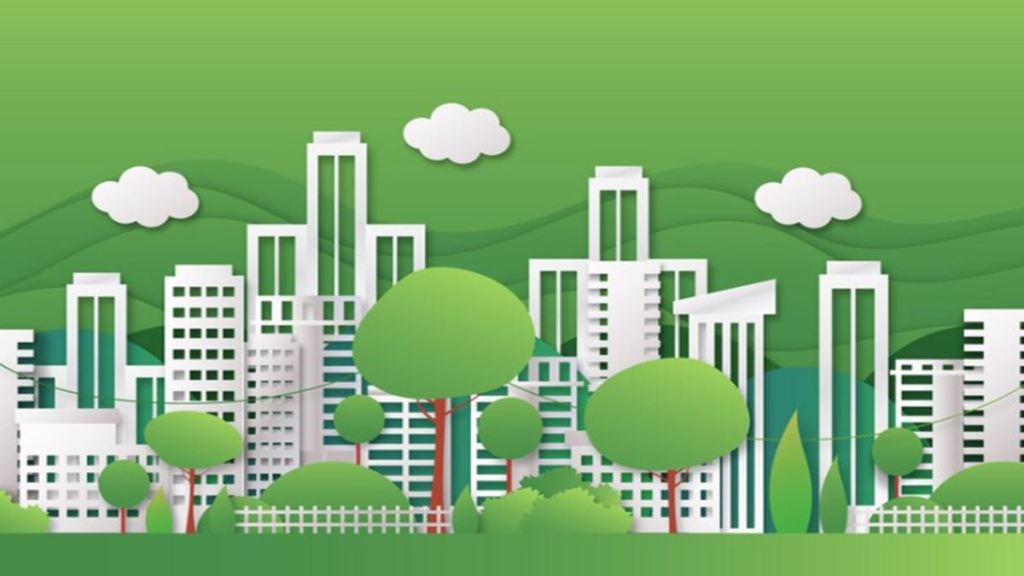As India faces rapid urbanization, sustainable building practices are becoming crucial for shaping the country’s future cities. With the urban population expected to reach 600 million by 2030, the strain on infrastructure and resources is immense. Addressing these challenges requires a focus on green technologies and sustainable development to minimize environmental impact and create resilient urban landscapes.
The construction sector, responsible for nearly 40% of global carbon emissions, is under significant pressure to adopt eco-friendly practices. India has emerged as a leader in this shift, ranking second globally for LEED-certified buildings, with over 8 billion square feet of certified green space. This progress underscores the country’s commitment to aligning with international sustainability standards and advancing green building practices.
The Indian Green Building Council (IGBC) has been instrumental in promoting green certifications, driving the adoption of technologies like solar panels, energy-efficient HVAC systems, and rainwater harvesting. These innovations not only reduce energy consumption and water usage but also enhance occupant health and productivity. Notable projects, such as Wipro’s Corporate Office in Bangalore, exemplify how integrating green technologies can lead to substantial environmental and economic benefits.
Also Read: Mutual Fund Investment: 10 strategies to boost your mutual fund returns
Government policies have also played a key role in advancing the green building movement. Fiscal incentives, including tax rebates and subsidies for renewable energy, have spurred investment in sustainable construction. The Securities and Exchange Board of India (SEBI) has mandated green reporting, requiring companies to disclose their environmental, social, and governance (ESG) practices. This regulatory push has attracted green financing options and bolstered interest in sustainable real estate.
The Indian construction market, projected to grow to $1.4 trillion by 2025, increasingly embraces green technologies. This transition is essential for ensuring that urban development remains both economically viable and environmentally responsible.
Avneesh Sood, Director of Eros Group, highlights the importance of this shift: “As we face rapid urbanization, integrating sustainable building practices is not just a choice but a necessity. At Eros Group, we are committed to leading this change, ensuring that our developments are both innovative and environmentally responsible.”
Technological advancements are revolutionizing construction processes, driving the adoption of green practices. Artificial intelligence (AI) optimizes building operations, predicts maintenance needs, and reduces energy consumption. The Internet of Things (IoT) enhances construction site management with sensors that monitor resources, track materials, and improve safety. Innovations like 3D printing and extended reality (XR) tools are transforming design and construction, enabling the use of biogenic and recycled materials while reducing time and costs.
“The environmental and economic benefits of sustainable buildings are substantial. Green buildings equipped with energy-efficient technologies significantly lower carbon footprints and energy usage. Buildings such as Godrej One and Wipro’s Corporate Office, both LEED Platinum certified, demonstrate significant energy savings through solar panels and efficient HVAC systems. Rainwater harvesting and greywater recycling further contribute to water conservation, addressing a critical issue in urban India,” says Sood.
Economically, green buildings offer considerable advantages. Although the initial investment may be higher, the long-term savings are significant. Reduced operational costs, lower energy bills, and enhanced building durability result in financial benefits for both developers and occupants. A report by the World Economic Forum valued the green technology sector in construction at $104 billion in 2023, with expectations to reach $194 billion by 2030, reflecting growing investor interest.
India’s future cities will increasingly embody a sustainable ethos as green technologies and smart systems become integral to urban infrastructure. Projects like Godrej One and Wipro Corporate Office illustrate how these technologies can reduce a building’s carbon footprint and resource consumption. Looking ahead to 2030 and beyond, India’s urban environment is expected to feature enhanced energy efficiency, improved air and water quality, and reduced greenhouse gas emissions.
“Government policies and incentives are crucial in driving this transformation. State and national regulations, including mandates for energy efficiency and water conservation, have accelerated the green building movement. The success of policies in promoting sustainable practices is evident in projects like ITC Green Building in Hyderabad, which highlights the effectiveness of these measures,” informs Sood.

